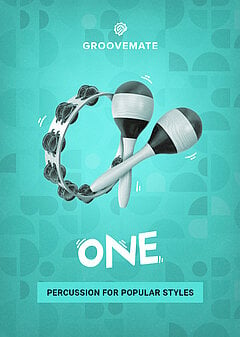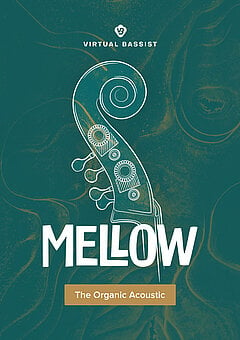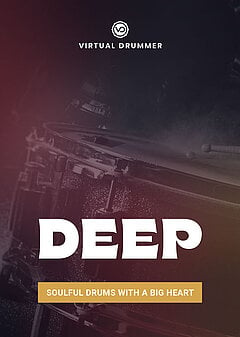How to Make Bossa Nova
Everything you need to create chill grooves and begin working with the most iconic Brazilian rhythms
SEPTEMBER 19TH, 2021
Instruments
There are a number of Brazilian percussion instruments you’ll see pop up frequently, such as the agogo, alfalfa, pandeiro, berimbau, shekere and others. Depending on how specific and authentic you want your bossa nova to be, you can replace these with more common instruments and VSTs. Typically, you can get by with a kick drum, snare cross stick and shakers plus a few odds and ends at your discretion.
Outside of percussion, the rhythm section is fairly constant, consisting of upright or electric bass, piano or electric piano, and acoustic guitar. These play well with bossa nova’s generally chill and relaxed feel, and the addition of acoustic guitar plays to this especially well (and sets it apart from other jazzy styles). You’ll encounter many vocal bossa nova songs, but the vocalist will often trade off with a flute and / or mellow horns like the flugelhorn or muted trombone.
As you see how these instruments work together, it will become clear how they create a uniquely relaxed feel that moves along at a perfectly gentle place. Once you have a grasp of the essentials behind each instrument, it’s time to move into creating the rhythm.

Bossa nova rhythms
The rhythm is typically based around a specific Afro-Cuban pattern known as clave, which is common in many forms of Latin music with distinct differences across various South American, Central American and Caribbean countries / cultures. The commonly accepted bossa nova clave is attributed to Antonio Carlos Jobim, though he personally considered it to be only a rhythmic motif:
Using clave as a guide makes the rhythmic aspect of bossa nova much simpler. You can simply give the above rhythm to a snare cross stick, agogo, clap, or really anything with a short, sharp transient to keep the beat moving forward. If you want to add a bossa nova feel to electronic music, you can give this rhythm to a completely different instrument or synth! The most important aspect to remember is that this is simply the pulse — not the whole picture. If you want to place a kick drum, snare, hi hat, shaker or anything else into your percussion groove, they don’t need to adhere to the clave exactly so long as the correct pulse is implied. For example, you’ll often want to add a shaker on every 8th note (or 16th if you’re using a 2/4 time signature as above) and accent the notes in the clave; this is quick and easy to do with UJAM’s Groovemate ONE, and you can manually adjust the rhythm and accents with its MIDI Drag & Drop feature should you desire. This is a fantastic option for quickly building out bossa nova rhythms without having to use premade loops.
Bossa nova songs vary widely in tempo, but you’ll rarely go wrong starting at 120bpm with a steady 8th note groove, emphasizing the clave. With the right instrumentation, you can create a calming, laid-back feel. It’s valuable to note, however, that the groove is extremely precise — controlled, purposeful, and almost inhumanly consistent. Notes are typically straight rather than swung. In that sense, bossa nova is often a quick genre to write in; the beat rarely changes, so you can create one groove, give it minor tweaks for a little variation and be done without needing to feel guilty!
Common chord progressions
You’ll likely learn the fastest by listening to many examples of bossa nova, but one progression you’ll come by often is Vmin7 -> I7 -> IV, or IImin7 -> V7 -> I. This is very common in jazz and offers an easy way to build out longer chord progressions to add interest to your songs. For example, in C major this will give you Gmin7 -> C7 -> F; then you can use the same chord relationship to get Dmin7 -> G7 -> C and bring you right back to the tonic or root note of the scale (though it helps to put other chords in between, of course).
It’s easy to overuse this mini-progression, often called “two five one,” but it’s great for getting you unstuck immediately when you’re in a bind and don’t know what to write next! The same principle applies to minor keys, but changes slightly to VIImin7 -> bIII7 -> bVImaj7 and IIdim7 -> V -> Imin7. In C minor, this gives you Bbmin7 -> Eb7 -> Abmaj7 and Ddim7 -> G7 -> Cmin7. Another fun one to use is IVmin6 -> Imaj7, such as Fmin6 -> Imaj7 (you can make an Fmin6 chord with F-Ab-C-D).
When creating bossa nova chord progressions, the key as always is to listen to a lot of songs in the genre first and always be sure your choices fit with the overall vibe of the song you’re creating. The genre has been around for well over half a century, so you may find that the chord progressions you create are already heavily used — for the most part this is okay, as long as you’re not infringing on a song’s copyright. Most of the great ones have already been used many times over! That said, if inspiration strikes and you’re able to push the boundaries of the genre, do it; just don’t feel obligated to reinvent the wheel.
Now that you’ve got a handle on the basics of bossa nova chords, let’s take a look at the instruments playing them: namely, the bass, guitar and piano.
The rhythm section
Bossa nova bass lines typically aren’t super complex — listening to Triste, performed by Elis Regina and Tom Jobim, you’ll notice the bass mostly consists of syncopated, plucked rhythms on the root note of each chord. Contrasted with the common ‘walking bass’ in a lot of jazz songs, it’s not all that different from how sub bass is used in EDM. Find a bass line that locks into the groove without being overly active or overpowering. As long as it has a bit of movement and comfortably fills out the low end, you’re good to go. For a reliable, gentle upright bass virtual instrument, give Virtual Bassist Mellow a try!
Piano and guitar play improvised chord patterns in a style known as comping. This can sync up with the clave, though it doesn’t have to. The key is to keep the chords light and short, leaving plenty of room for the bass, percussion and melody to come through. You’ll rarely want to use sustained chords except for effect in circumstances where you feel it’s necessary. This keeps the mix relaxed, uncluttered and slightly bouncy. You can simply choose one, but if you decide to use both guitar and piano you have more creative flexibility — you could break the rule above and have soft piano sustained chords while the guitar comps (or vice versa), or maybe some guitar comping with light piano noodling to fill in a little space. Just be careful not to overcrowd the rhythm section, as bossa nova typically feels most natural when it’s gentle and airy rather than heavy.
Mixing
Less is more here. Because you’re working with fewer instruments on fewer tracks, each has a greater role in the overall dynamic content of every song. Go easy on compression and stick to long attacks to allow the instruments to breathe and keep the transients mostly untouched (though you can squeeze them a little in the drums to keep everything tight). The bass is the one area you should compress more heavily — the low end can be difficult to work with, and if its volume is too inconsistent, it can throw off your entire percussion section.
You can use a light reverb, usually room, though you can also give plate reverb a try if you like. Be very careful not to overdo it; use short decay times, usually sub 1-second, at a low wetness. With any small ensemble recordings, your main goal is to preserve the original characteristics of the group’s performance with as little processing as possible. This is admittedly a little trickier if you’re using virtual instruments, but in that case you’ll want to lean on CC automation like pitch bend, expression and/or the mod wheel rather than stacking a bunch of effects!
For EQ, give the airy top end to vocals, flute, cymbals, snare and brushes. Avoid heaving boosting and/or cutting, and unless you’re combining bossa nova with other genres, you can largely ignore the typical EDM rules of heaving high pass filtering to remove low end in every but the bass; you actually want some of those lower frequencies because they help fill out the mix, which only contains a few instruments (unlike potentially hundreds tracks like in more processing-heavy genres like EDM and metal).
Wrapping up
At this point, you’re in good shape to get started creating bossa nova songs! Tackle the drum groove first, building up from the clave, introduce the rest of the rhythm section, and then add any melody instruments you feel are appropriate. Keep in mind if you’re coming from an electronic background: this style of production is much more hands-off, and you may be tempted to make a lot of dramatic adjustments that won’t fit with the genre. Focus on bringing out the best qualities of each instrument and blending them seamlessly together, giving each ‘performer’ their room to stretch their limbs a bit.
Beyond that, just have fun! There are few more perfect genres for chill, relaxed music you can ease into and happily lean into a single rhythm for multiple minutes on end. Once you feel comfortable creating bossa nova in the traditional sense, expand its clave, percussion and comping styles into other genres like EDM! With a little creativity and a desire to experiment, you’ll be able to joyfully push musical boundaries in no time!
Stay up to date
Sign up and we’ll send you an e-mail with product news and helpful stuff every now and then. You may unsubscribe at any time.
Defy Limits
We develop software solutions that enable people to create, consume and interact with music.




